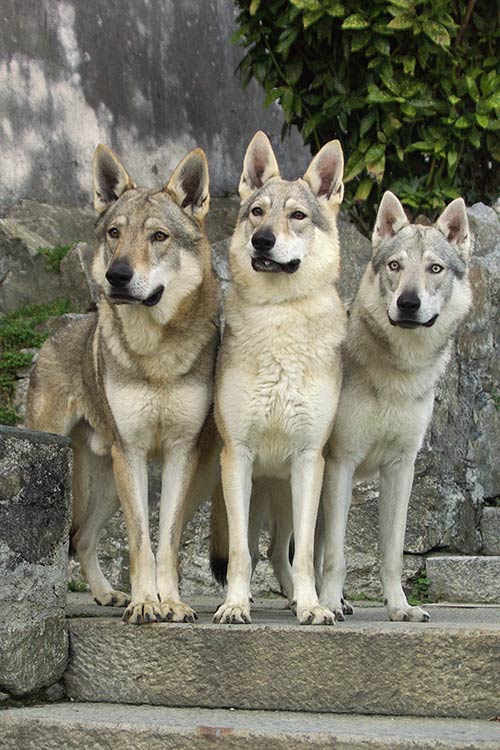
It almost sounds like a bad joke. What happened when 48 German Shepherd Dogs and 4 Carpathian Wolves “partied” together?
The answer: A dog that first time dog owners shouldn’t consider.
Seriously.
But it’s tempting. After all, who wouldn’t want a dog that looks like a wolf, is extremely intelligent and loyal to its people, had to be taught to bark because it tends to be quiet, and has world class stamina and endurance making it a great choice for active owners?
Meet the Czechoslovakian Vlčák (or CSV to its very close friends), a breed that was originally created to patrol Czechoslovakian borders in the 1950s. Why it is a poor choice for first time dog owners is that Mother Nature can’t be fooled. These dogs have “wild DNA” in their blood, and this can make them unpredictable. They also have a sharp instinct for hunting prey, so anyone with another, smaller pet in the house needs to beware. And finally, a Vlčák can be tough to train as they won’t learn easily if they don’t have motivation, and motivating such a dog takes experience.
If you have that experience (and after doing your homework about the breed), you just might be tempted. Take a look at one of these beauties:
These dogs are currently used in Europe and the United States for search and rescue, tracking, obedience, agility, drafting, herding, and working dog sports. The breed was created in 1955 when Mr. Hartl (a Czech) and Mr. Rosik (a Slovakian) captured and trained four Carpathian Wolves – “Sarik,” “Brita,” “Argo” and “Lejdy,” and bred them with 40 or 50 German Shepherd Dogs. Then they crossed male Carpathian wolves with female German Shepherds. and female Carpathian wolves with male German Shepherds. The offspring were then bred among each other for ten years. The result was the Czechoslovakian Vlčák
The Vlčák was officially recognized as a national breed in Czechoslovakia in 1982, by the Fédération Cynologique Internationale (FCI) in 1989, and was put on the AKC’s FSS list in 2001. As far as we know, the plural of Czechoslovakian Vlčák is Českoslovenští Vlčáci.
Image taken from the AKC’s website on the breed with consent.
